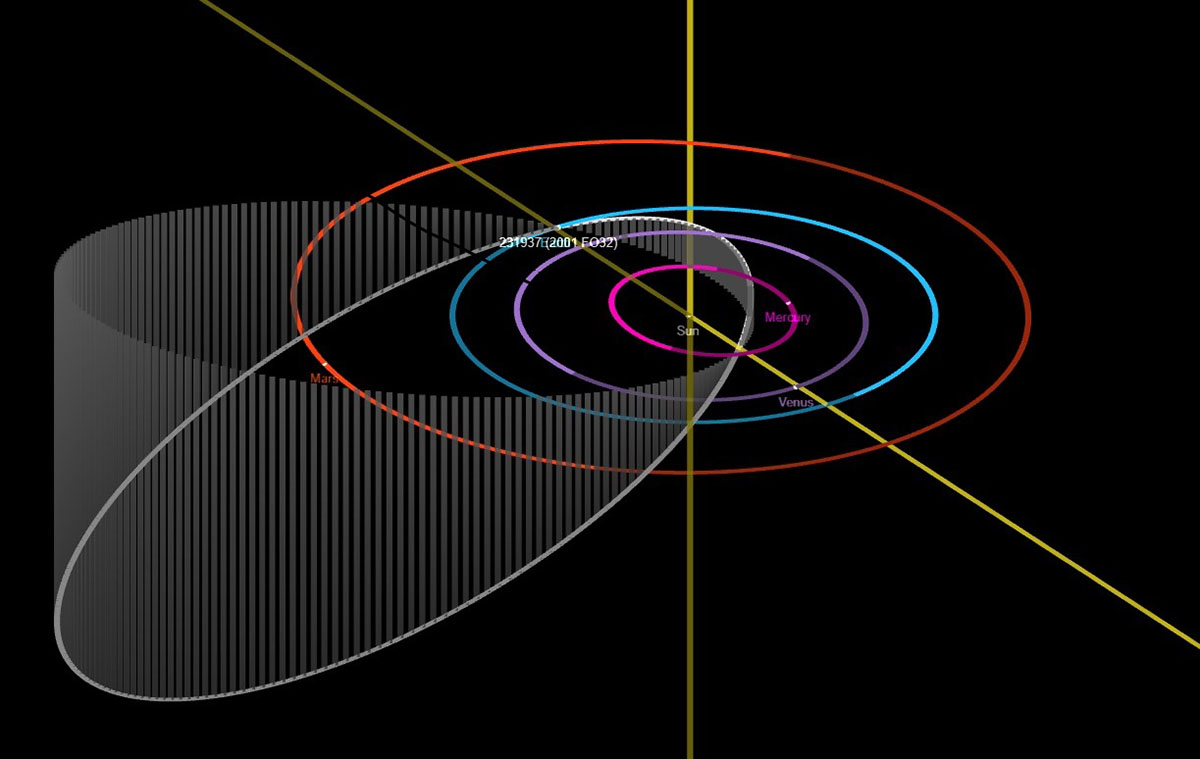This diagram depicts the elongated and inclined orbit of 2001 FO32 as it travels around the Sun (white ellipse). Because of this orbit, when the asteroid makes its close approach to Earth, it will be traveling at an unusually fast speed of 77,000 mph (124,000 kph). (NASA/JPL-Caltech)
Home This diagram depicts the elongated and inclined orbit of 2001 FO32 as it travels around the Sun (white ellipse). Because of this orbit, when the asteroid makes its close approach to Earth, it will be traveling at an unusually fast speed of 77,000 mph (124,000 kph). (NASA/JPL-Caltech) This diagram depicts the elongated and inclined orbit of 2001 FO32 as it travels around the Sun (white ellipse). Because of this orbit, when the asteroid makes its close approach to Earth, it will be traveling at an unusually fast speed of 77,000 mph (124,000 kph). (NASA/JPL-Caltech)



